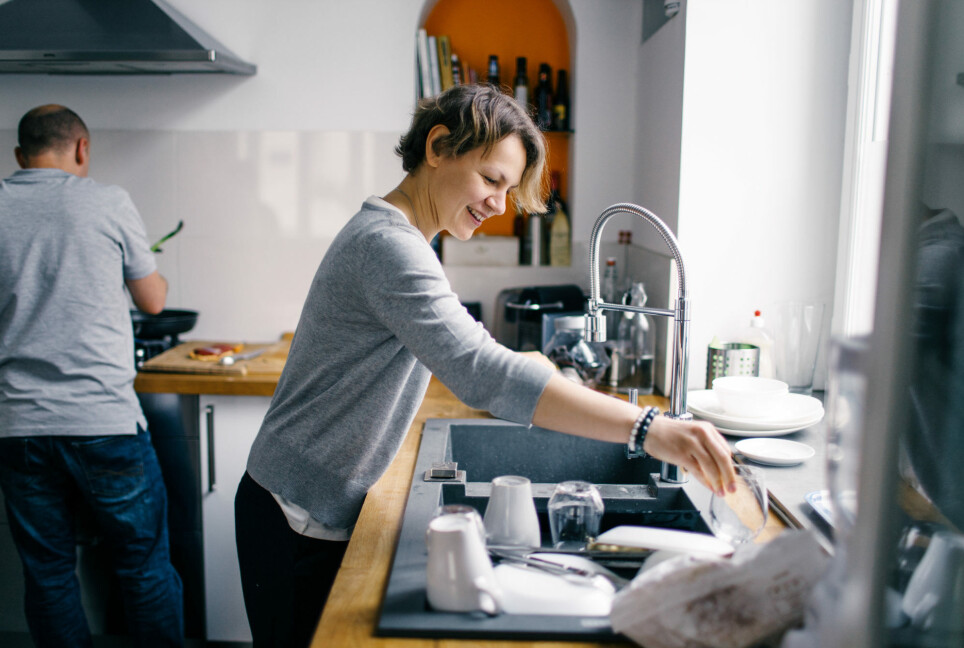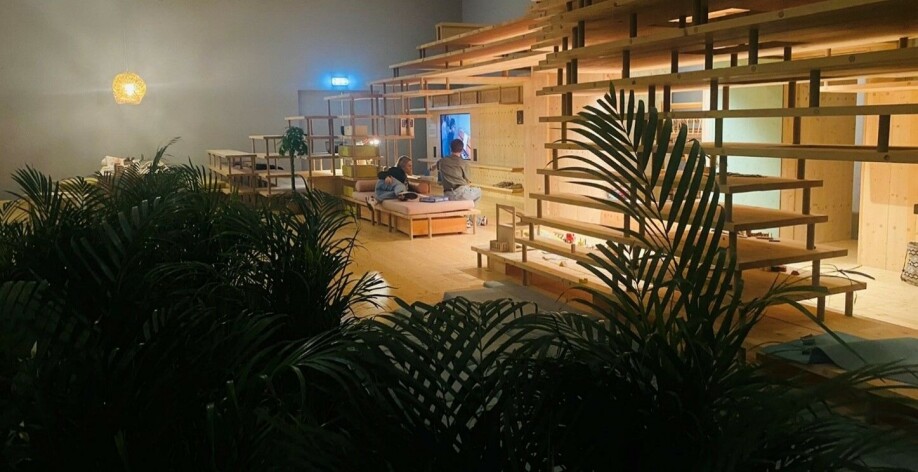THIS ARTICLE/PRESS RELEASE IS PAID FOR AND PRESENTED BY SINTEF - read more

Could you share a guest room with your neighbours?
Singles and couples with children who have moved away from home are the most positive to alternative living arrangements.
Can architecture help to resolve the emerging crises linked to climate change, loneliness and housing in Norwegian towns and cities? On its own, perhaps not, but housing arrangements that promote public health and inclusion appear to be profitable.
When residents and developers plan in unison, the likelihood of the emergence of innovative and more eco-friendly housing increases. This is the conclusion arrived at by SINTEF and Bergen municipality after testing some new approaches to urban development.
Who wants to explore new ways of living?
Bergen was the first municipality in Norway to appoint its own city architect tasked with promoting quality in the built environment. As part of a research project called Bopilot, the city wanted to:
- Contribute to more innovation and diversity in the housing sector.
- Promote knowledge of, and interest in, alternative housing options.
- Demonstrate to developers that there is a market for alternative models and homes involving shared space and use arrangements.
“We wanted to demonstrate how architecture and the way we build can together act as tools for the creation of sustainable communities,” Tina Larsen says.
She is a senior architect at the municipal consultancy unit Byarkitekten, and project manager of Bopilot Bergen.

Yes to bringing families with children into city centres and promoting diversity
The urban district of Grønneviken in Bergen is growing quickly, and Bergen municipality has two objectives for its development. The first is to make it attractive to families with children to live in the city centre, and the second to build homes and neighbourhoods offering a diversity of shared housing arrangements.
Potential residents, housing developers and architects were invited to take part in a variety of project activities designed to enable researchers and the municipality to generate enthusiasm for new housing models, both within the municipality itself, and in the housing market.
“Our hypothesis has been that the various activities can help to promote change and innovation in different ways,” senior research scientist Karin Høyland at SINTEF says.
“We wanted to find out who was interested in shared housing arrangements, as well as what it was specifically they wanted to share. We also wanted to see specific solutions implemented in Grønneviken,” Tina Larsen adds.
Digital participation was employed to get an idea of the willingness for shared arrangements and to get in touch with residents who wanted to take part in further activities.
The architecture was not the biggest challenge
It emerged that many home buyers were interested and came with a variety of motivations for wanting to share. Some groups exhibited a greater interest than others.
“Singles and couples with children who have moved away from home are the group most positive to alternative living arrangements, while families with children living outside the city centres are the least interested,” Larsen says.
Those who had shown interest for shared housing arrangements were invited to take part in a so-called design sprint. This is a method by which participants define their needs and make and test solution prototypes as the project progresses.
Cross-disciplinary groups were assigned to develop new spatial solutions involving community housing and sharing arrangements.
It quickly became clear that architectural solutions are key if this approach is to work, although this is not the main factor influencing the building of shared housing options.
Issues such as municipal bureaucracy, as well as legal and financial factors, are equally challenging.
Developers must recognise the potential
Activities linked to the Bopilot project revealed that it is essential to demonstrate to developers that there is a demand in the market.
“Only when developers recognise that a market exists will they make the leap and start thinking about non-traditional housing concepts,” Tina Larsen says.
The early involvement of potential residents, right from the concept stage, can help to lower the threshold for considering alternative housing options involving sharing arrangements.
Collaboration at an early phase is also important for enabling future residents to establish a sense of belonging and confidence in each other, as well as influence over housing design. It also helps to show developers that there is a willingness in the market for innovative housing options.
This is why Bergen municipality arranged a so-called hackathon, involving a 24-hour brainstorming competition aimed at creating a forum for all those looking to explore new ways of building and living.
“Our dream was to develop a new and easy-to-use digital tool similar to Tinder or AirBnB that enables future housing owners seeking innovative sharing arrangements to meet architects and developers before new housing is designed and built,” says Larsen.
A total of 32 teams from all across Norway took part in the online hackathon event. The winners were the firms Sweco and 3rw arkitekter, which are currently working to develop a platform called Samdelt. The most recent status is that they are in the process of completing a business plan and are looking for business partners, including UX designers and programmers.
Talk about architecture!
The Bopilot project was concluded with the housing exposition ‘NABO’ (How shall we live together?), which was held at the art gallery KODE in Bergen. The expo included a full-scale model of a shared housing unit.
The model was the result of interviews with residents in a housing co-operative in Stavanger. Here, the public could take part in everyday life in a housing collective and see what the residents would have shared if they had strived to achieve even more than they are currently doing in the co-operative today.
A number of ‘neighbour evening’ events were also held at which residents, developers, the municipality, politicians and architects were given the opportunity to discuss both specific topics and projects, as well as issues such as social diversity, shared housing arrangements, housing quality and neighbourhoods.
560 school pupils visited the expo as part of a so-called ‘Cultural School Bag’ event. With the help of some architecture students, they were given the opportunity to make their own architectural models and to provide the municipality with input as to what communal spaces they would like to see in the urban districts of the future.
Participation in the various activities shows that there is a lot of enthusiasm for neighbourhood communities and architecture.
“We’re not really surprised to see these levels of enthusiasm,” Tina Larsen says. “This is a trend. People are genuinely interested in design, the home and architecture. And the Covid-19 pandemic has aroused awareness of loneliness and sharing arrangements."
Good architecture is not only about visual impression, but also function. It is much easier to achieve innovation in housing when architects communicate more with residents. By revealing both opportunity and potential conflicts at an early stage, we will ultimately identify better solutions.
Connecting residents with developers
In the course of the Bopilot project, the municipality was contacted by many residents looking for housing projects offering shared arrangements and communal options.
Many were looking for a more social way of living and were simply wondering where they had to go to find the right project.
“This has led us to believe that there is a need for a new role in the city administration – a form of housing liaison office that can assist residents and developers who want to live or build in new ways, to find each other,” Larsen says.
Four pieces of advice to other municipalities
Based on the processes carried out during the course of the project, researchers can now offer the following four pieces of advice to other municipalities:
- Put the significance of housing for sustainable community development on the agenda.
- Establish commitment in the municipality to the need for changes in housing development policy.
- Provide someone with a clear mandate to act as a driver to implement such policies and identify relevant roles.
- Employ pilot projects as agents of change.
See more content from SINTEF:
-
How Svalbard is becoming a living lab for marine restoration
-
New study: Even brand-new apartments in cities can have poor indoor air quality
-
Fresh hope for patients with chronic inflammatory bowel disease
-
Testing a giant ship: May take five kilometres to stop
-
A robot is helping researchers hunt for the best cancer warriors
-
Locomotives that run on diesel can be electrified





































